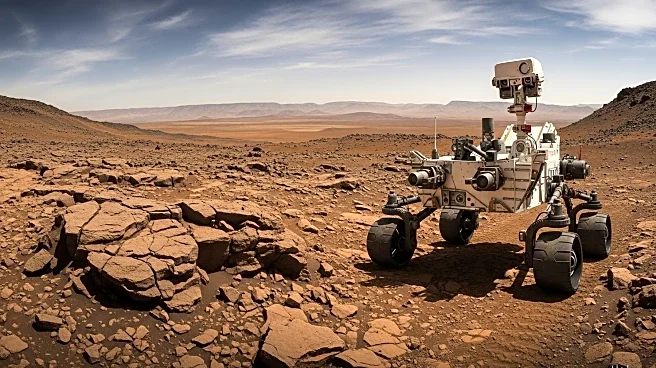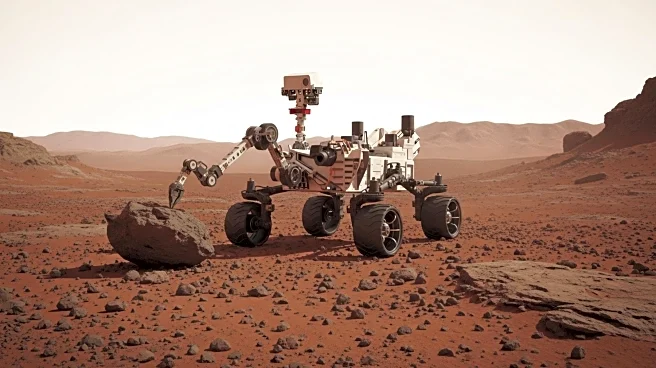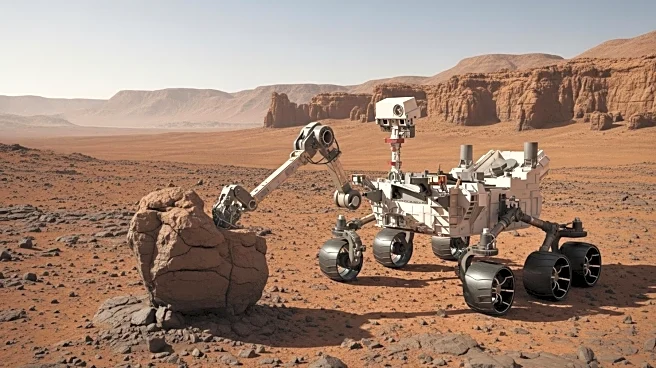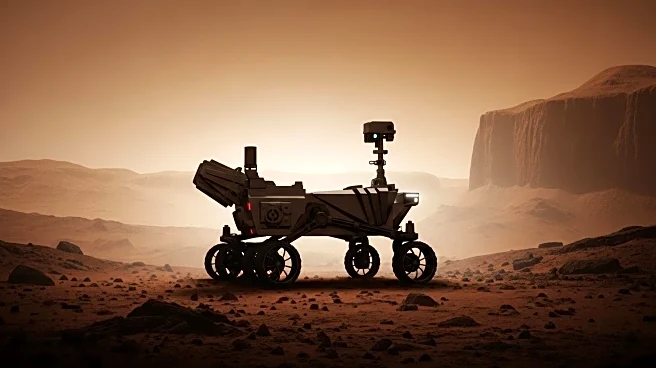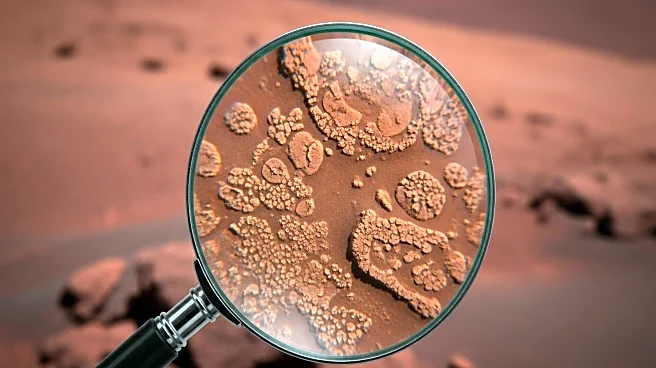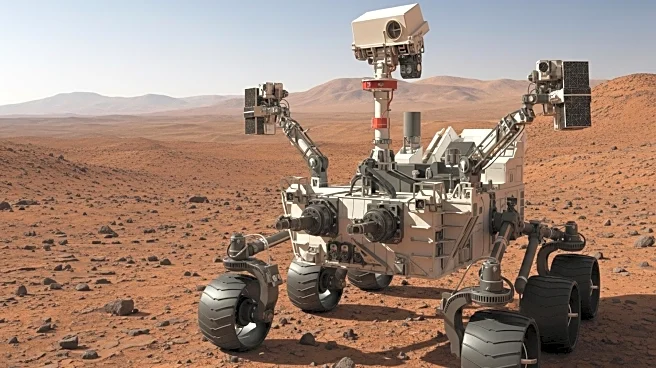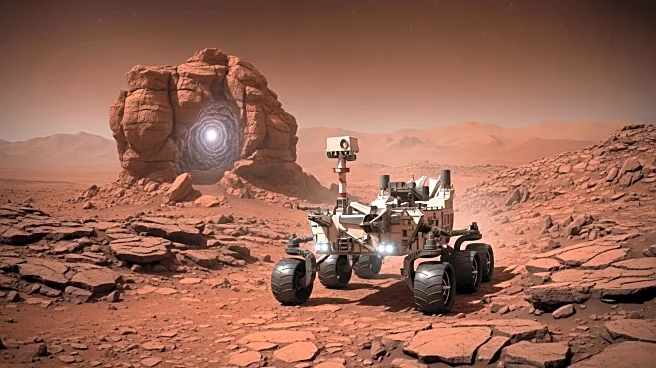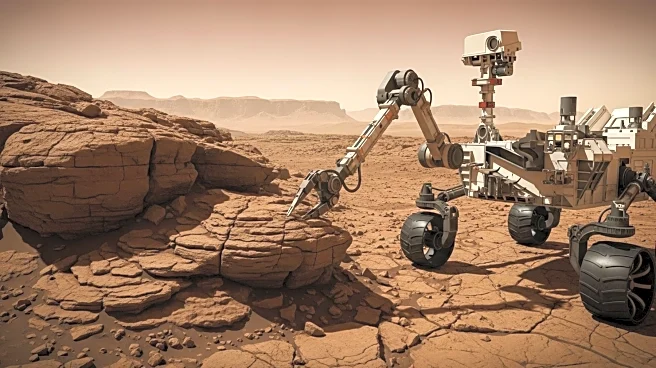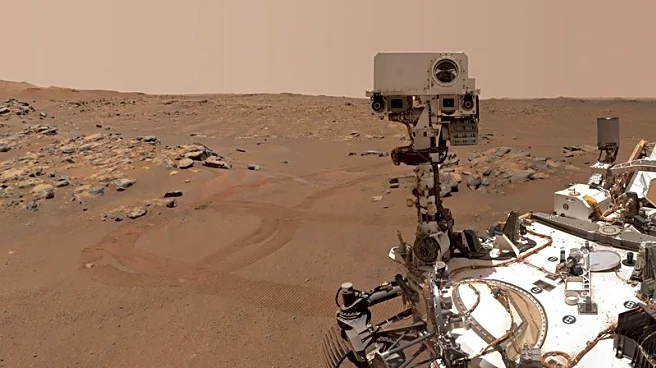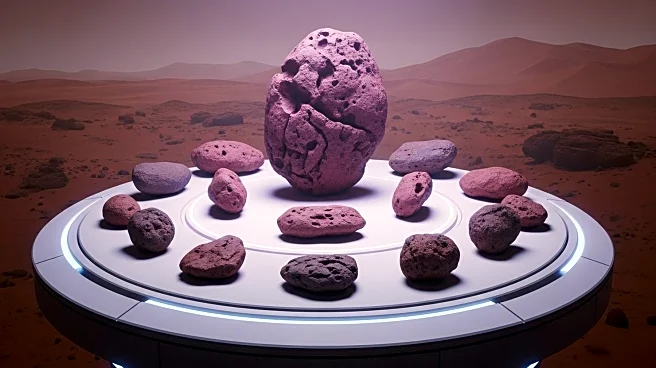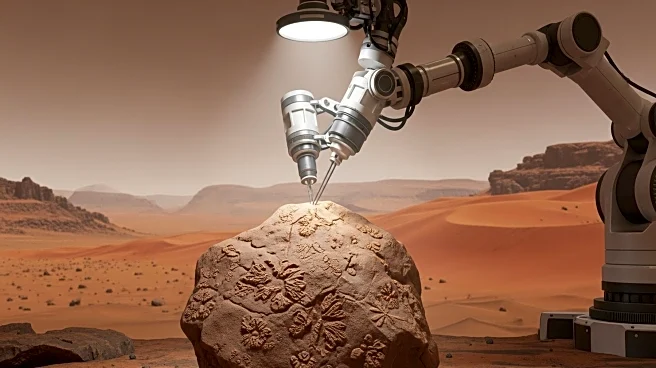What's Happening?
NASA's Curiosity rover is currently engaged in a detailed study of the 'boxwork' terrain on Mars, specifically focusing on the pronounced ridges and hollows in the area of Mount Sharp. The rover's mission involves analyzing the transition from smoother ridge bedrock to more nodular bedrock at the edge of a shallow hollow. This investigation is part of a broader effort to understand the geological history and processes that have shaped the Martian surface. The team hypothesizes that the ridges may have formed due to cementation by circulating fluids, followed by erosion of the less resistant bedrock. The rover is equipped with various instruments, including MAHLI, Mastcam, ChemCam, and APXS, to document textures, structures, and compositions of the terrain. The current focus is on selecting rock targets for analysis and planning a future drilling operation to gather more data.
Why It's Important?
The findings from Curiosity's exploration of the boxwork terrain could provide significant insights into the past presence of water on Mars and the planet's geological history. Understanding these processes is crucial for piecing together the environmental conditions that may have supported life. The data collected by Curiosity can also inform future missions, including those aimed at human exploration. The study of Martian geology not only enhances our knowledge of Mars but also contributes to comparative planetology, helping scientists understand similar processes on Earth and other celestial bodies.
What's Next?
Curiosity's mission will continue with a planned drive to another boxwork ridge, where the team intends to conduct a drilling operation. This will allow for a more in-depth analysis of the ridge's composition and structure. The rover will also continue its environmental monitoring activities, which include observing dust in the atmosphere, dust-devil activity, and cloud formations. These ongoing studies will help refine the team's understanding of the Martian climate and surface conditions.
